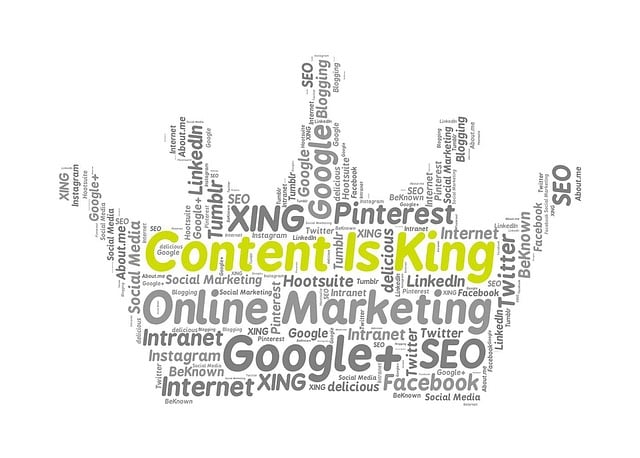Creating fresh and engaging content consistently can be a daunting task for any digital marketer or content writer. The demand for unique content is high, but sometimes the well of ideas runs dry. That’s where Artificial Intelligence (AI) steps in as a game-changer. AI can help you generate a wealth of content ideas, streamline your workflow, and boost your creativity. Let’s dive into how you can leverage AI to keep your content pipeline flowing smoothly.
Understanding AI in Content Creation
What is AI?
Artificial Intelligence refers to computer systems that can perform tasks usually requiring human intelligence. These tasks include learning, reasoning, problem-solving, understanding language, and even creativity.
In content creation, AI tools can analyze data, recognize patterns, and generate ideas, making the content creation process faster and more efficient.
Why Use AI for Content Ideas?
Using AI for content ideas saves time and effort. AI tools can analyze vast amounts of data quickly, providing insights that might take humans days to uncover.
They can suggest trending topics, identify content gaps, and even help with keyword research, ensuring your content is relevant and engaging for your audience.
How AI Generates Content Ideas
Analyzing Trends and Data
AI tools can scan the internet to identify trending topics in real-time.
They analyze social media platforms, news websites, and forums to find what people are talking about. By understanding these trends, you can create content that resonates with your audience’s current interests.
Keyword Research and Optimization
AI-powered keyword research tools can help you find the best keywords to target. These tools analyze search volumes, competition, and related keywords to suggest the most effective keywords for your content.
This ensures your content is optimized for search engines, driving more traffic to your site.
Content Gap Analysis
Content gap analysis involves identifying topics that your competitors have covered but you haven’t. AI tools can perform this analysis quickly, suggesting topics that you can cover to fill these gaps.
This not only helps you stay competitive but also provides valuable content to your audience.
Enhancing User Engagement with Dynamic Content
Dynamic content is personalized content that changes based on user behavior, preferences, and demographics. AI can help you create dynamic content that engages users on a deeper level, keeping them coming back for more.
For instance, an AI tool can track a user’s behavior on your website and suggest personalized content based on their interests. If a user frequently reads articles about startup financing, the AI can recommend related content, such as guides on securing venture capital or interviews with successful startup founders.
This personalized approach keeps users engaged and increases the likelihood of conversion.
Semantic Analysis for Deep Content Insights
Semantic analysis is a technique used by AI to understand the meaning behind words and phrases in a body of text. This goes beyond simple keyword analysis to grasp the context and sentiment behind user interactions.
By employing semantic analysis, startup founders can uncover deeper insights into what their audience truly cares about and create content that speaks directly to those needs and interests.
Practical Steps to Use AI for Content Ideas
Using AI Tools for Trend Analysis
Start by using AI tools like Buzz Sumo or Google Trends. These tools can show you what topics are currently trending. You can enter a keyword or topic related to your niche, and the tool will provide insights into how popular that topic is and related topics that are also gaining traction.
For example, if you run a fitness blog, you might enter “home workouts.” The AI tool could then show you trends related to specific types of home workouts, such as yoga, HIIT, or pilates. You can use these insights to create content that taps into these trends.
Conducting Keyword Research with AI
Tools like SEMrush or Ahrefs are great for keyword research. Enter your main topic into the tool, and it will provide a list of related keywords, along with their search volume and competition level.
These tools also offer keyword difficulty scores, helping you choose keywords that are easier to rank for.
For instance, if your main topic is “healthy recipes,” the AI tool might suggest related keywords like “quick healthy recipes,” “healthy recipes for weight loss,” or “vegetarian healthy recipes.” You can then create content around these specific keywords to attract more targeted traffic.
Automating Content Research and Generation
AI can significantly streamline the content research and generation process. Tools like ContentBot or AI Dungeon can automatically generate content ideas based on your input.
This can be particularly useful for creating initial drafts, brainstorming sessions, or overcoming writer’s block.
For example, you can input a broad topic like “remote work best practices” into an AI content generator. The AI can then produce several subtopics such as “tools for remote collaboration,” “managing remote teams effectively,” and “mental health in remote work.”
These AI-generated ideas can serve as the foundation for detailed articles, blog posts, or even white papers.
Refining Content with AI-Driven Editing Tools
After generating content, AI-driven editing tools can help refine and enhance the quality of your drafts. Tools like Grammarly or Hemingway Editor can analyze your writing for grammar, style, readability, and tone, ensuring that your content is polished and professional.
For startup founders, this step is crucial in maintaining a consistent brand voice and delivering high-quality content. If you’re drafting an investor update or a thought leadership piece, these tools can ensure that your message is clear, concise, and impactful, increasing the likelihood of engagement and positive responses.
Enhancing SEO with AI
AI tools like SurferSEO or Clearscope can optimize your content for search engines. These tools provide real-time suggestions for improving your on-page SEO, such as keyword placement, content length, and use of headings. By following these recommendations, you can improve your search engine rankings and drive more organic traffic to your site.
For instance, if your startup focuses on eco-friendly products, AI SEO tools can help identify the most effective keywords related to sustainability, green living, or eco-friendly tips.
They can also suggest content structures that align with search engine algorithms, such as including FAQs, lists, and engaging introductions.
Engaging with AI-Powered Content Distribution
Once your content is created and optimized, the next step is distribution. AI can help you strategically distribute your content to maximize reach and engagement.
Tools like HubSpot or Buffer can analyze your audience’s behavior and suggest the best times and platforms to publish your content.
For example, if data shows that your target audience is most active on LinkedIn during weekday mornings, you can schedule your posts accordingly.
Additionally, these tools can automate the posting process, saving you time and ensuring consistent content delivery. This strategic distribution approach ensures that your content reaches the right people at the right time.
Utilizing AI for Continuous Content Improvement
AI can also be used for ongoing content performance analysis and improvement. Tools like Google Analytics with AI capabilities or Hotjar can provide insights into how your content is performing and where improvements can be made.
These tools can track user engagement metrics, such as time spent on page, bounce rates, and conversion rates.
For startup founders, continuously analyzing these metrics is vital for refining your content strategy. If a particular blog post on “innovative startup funding methods” has a high bounce rate, AI tools can help you identify why.
Perhaps the content needs more engaging visuals, a clearer structure, or more in-depth information. By iterating based on AI-driven insights, you can continually enhance your content’s effectiveness.
Collaborating with AI for Creative Content Formats
Exploring new content formats with the help of AI can set your startup apart from competitors. AI tools can assist in creating interactive content, videos, and even podcasts.
For example, platforms like Lumen5 can turn blog posts into engaging videos, while Descript can help produce and edit podcasts with ease.
For a startup founder, diversifying content formats can expand your reach and appeal to different audience preferences. If you’re targeting a younger demographic, AI-generated video content on social media platforms might be more effective than traditional blog posts.
Experimenting with various formats ensures that your content strategy remains dynamic and adaptable.
Identifying Content Gaps with AI
Use tools like MarketMuse or Clearscope to perform a content gap analysis. Enter your website and the websites of your competitors into the tool.
It will analyze the content on these sites and identify topics that your competitors have covered but you haven’t. This can give you a list of potential content ideas to explore.
For example, if your competitors have written extensively about “intermittent fasting,” but you haven’t covered it yet, you can create a series of posts on this topic. This not only fills a gap in your content but also provides valuable information to your readers.
Leveraging AI for Content Creation

Using AI Writing Assistants
AI writing assistants like Jarvis (now Jasper), Write sonic, or Copy.ai can help you generate content ideas and even create drafts. These tools use natural language processing (NLP) to understand your input and generate relevant content.
You can provide a brief or a topic, and the AI will produce a draft that you can refine and personalize.
For instance, if you need to write an article on “mental health tips,” you can input this topic into an AI writing assistant. The AI will then generate a draft with various tips and advice on mental health, which you can then edit to match your style and voice.
Automating Social Media Content
AI tools like Buffer, Hootsuite, or Sprout Social can analyze your social media performance and suggest content ideas that are likely to engage your audience. These tools can recommend the best times to post, the types of content that perform well, and even suggest hashtags to use.
For example, if you run a travel blog, these tools might suggest posting more about “hidden travel gems” or “local travel experiences,” based on what your audience engages with the most.
This ensures that your social media content is always relevant and engaging.
Automating Content Curation for Audience Engagement
AI can also automate content curation, helping you consistently share relevant and high-quality content with your audience. Tools like Curata and Scoop.it use AI to discover and curate content from various sources based on your specified criteria.
This not only saves time but also ensures that your audience always has access to the latest industry trends and insights.
Utilizing AI for Visual Content Creation
Visual content, such as images, infographics, and videos, plays a crucial role in enhancing user engagement. AI tools like Canva and Lumen5 can help you create compelling visual content even if you lack design skills.
Canva offers AI-powered design suggestions, templates, and elements that you can customize to match your brand identity.
Enhancing Creativity with AI
AI can also boost your creativity by providing unique perspectives and ideas that you might not have considered. Tools like Articoolo or Kafkai can generate article ideas and outlines based on a given topic.
These tools analyze a wide range of sources to come up with fresh and unique angles for your content.
Imagine you need to write about “sustainable living.” An AI tool can suggest various angles like “how to start a zero-waste lifestyle,” “the impact of sustainable living on mental health,” or “budget-friendly sustainable living tips.”
These suggestions can spark your creativity and help you create unique and engaging content.
Integrating AI into Your Content Strategy
Planning Your Content Calendar
AI can help you plan your content calendar by predicting trends and suggesting the best times to publish. Tools like CoSchedule or Trello, integrated with AI features, can analyze your past content performance and predict which topics and publishing times will yield the best results.
For instance, if your past blog posts on “summer fitness tips” performed well in June, the AI can suggest planning similar content for the upcoming June. This ensures that your content strategy is data-driven and aligned with your audience’s interests.
Personalizing Content for Your Audience
AI can help you personalize your content based on your audience’s preferences and behavior. Tools like HubSpot or Marketo can analyze user data to segment your audience and suggest content that matches their interests.
This ensures that your content is highly relevant and personalized, increasing engagement and loyalty.
For example, if a segment of your audience frequently engages with content about “digital marketing trends,” you can create more content around this topic for that specific segment. This targeted approach ensures that your audience feels understood and valued.
Measuring Content Performance
AI can also help you measure the performance of your content and adjust your strategy accordingly. Tools like Google Analytics, with AI-powered features, can provide insights into how your content is performing.
They can track metrics like page views, bounce rates, and conversion rates, and suggest improvements.
For instance, if your blog post on “vegan recipes” has a high bounce rate, the AI might suggest improving the introduction or adding more engaging visuals. By continuously monitoring and optimizing your content, you can ensure that it remains effective and engaging.
Advanced AI Techniques for Generating Content Ideas
Using Natural Language Processing (NLP)
Natural Language Processing (NLP) is a subfield of AI that focuses on the interaction between computers and humans through language. NLP can analyze large volumes of text to identify trends, sentiments, and key topics.
Tools like MonkeyLearn or Lexalytics can help you understand what your audience is talking about and what content they are interested in.
For example, if you run a fashion blog, NLP tools can analyze social media comments, reviews, and forums to identify trending fashion topics like “sustainable fashion” or “vintage clothing.” You can then create content around these trending topics to engage your audience.
Leveraging Machine Learning for Predictive Insights
Machine learning, another branch of AI, involves training algorithms on data to make predictions or decisions without being explicitly programmed. Machine learning models can analyze past content performance to predict future trends and suggest content ideas.
For instance, if your blog posts on “digital detox” tend to perform well during the holiday season, a machine learning model can predict similar trends for the upcoming holidays and suggest creating more content around digital detox. This proactive approach ensures that your content remains timely and relevant.
Utilizing AI for Competitor Analysis
AI tools can also perform competitor analysis to help you stay ahead in your niche. Tools like Crayon or Similar Web can analyze your competitors’ content strategies, identify their top-performing content, and suggest areas where you can outperform them.
For example, if a competitor’s blog post on “minimalist living tips” is getting a lot of engagement, you can create a more comprehensive guide on the same topic, adding unique insights and perspectives to make your content stand out.
AI-Driven Content Creation Tools

Content Idea Generators
AI-powered content idea generators like Answer The Public or Uber suggest can provide a wealth of content ideas based on user queries and search trends. These tools aggregate data from search engines and other sources to suggest topics that people are actively searching for.
For instance, if you enter “home gardening” into Answer The Public, it might suggest ideas like “how to start a home garden,” “best plants for home gardening,” or “home gardening tips for beginners.” These suggestions can help you create content that addresses your audience’s specific needs and interests.
AI for Content Curation
Content curation involves finding and sharing relevant content from other sources with your audience. AI tools like Curata or Scoop.it can help you discover high-quality content to curate, saving you time and ensuring that you share valuable information with your audience.
For example, if you run a tech blog, these tools can help you find the latest news, articles, and research on technology trends. You can then share this curated content with your audience, adding your own commentary to provide additional value.
Generating Content Outlines and Structures
AI tools like Outranking or Frase can help you create detailed content outlines and structures. These tools analyze top-performing content on a given topic and suggest headings, subheadings, and key points to include in your own content.
For instance, if you need to write an article on “healthy meal planning,” these tools can suggest an outline that includes sections like “benefits of healthy meal planning,” “how to create a meal plan,” and “easy healthy meal recipes.”
This helps you organize your content effectively and ensures that you cover all relevant aspects of the topic.
Best Practices for Using AI in Content Creation
Balancing AI and Human Creativity
While AI can provide valuable insights and automate many aspects of content creation, it’s essential to balance AI with human creativity. AI can suggest topics and generate drafts, but human input is crucial for adding personality, voice, and unique perspectives to your content.
For example, an AI tool might generate a draft for an article on “mindfulness techniques.” As a writer, you can refine this draft by adding personal anecdotes, expert quotes, and your unique insights to make the content more engaging and relatable.
Ensuring Quality and Accuracy
AI tools can sometimes generate content that is generic or lacks depth. It’s essential to review and refine the AI-generated content to ensure quality and accuracy. Fact-checking and adding detailed information can help enhance the value of the content.
For instance, if an AI tool generates a list of “top travel destinations,” you should verify the information, add specific details about each destination, and include tips or personal experiences to make the content more informative and engaging.
Staying Ethical with AI
Using AI responsibly and ethically is crucial. Avoid over-relying on AI-generated content and ensure that your content is original and not plagiarized. Transparency with your audience about the use of AI in your content creation process can also build trust.
For example, if you use AI tools to generate ideas or drafts, you can mention this in your content creation process. This transparency shows your audience that you value authenticity and integrity in your content.
Success Stories of Leveraging AI for Content Ideas
The Food Blogger
Jane runs a popular food blog but was struggling to come up with new recipe ideas. She decided to use AI tools to revitalize her content strategy. By leveraging tools like SEMrush for keyword research and BuzzSumo for trend analysis, she discovered a rising interest in vegan and gluten-free recipes.
Using this data, Jane integrated AI writing assistants like Jasper to generate drafts for these recipes. She added her personal touch by testing each recipe and including her unique tips.
As a result, her blog traffic increased by 40% in six months, and she gained a significant number of new followers who were interested in her innovative recipes.
The Tech Website
Tech Innovators, a tech news website, wanted to stay ahead of the curve by consistently publishing content on emerging technologies. They employed AI tools like MarketMuse for content gap analysis and Lexalytics for sentiment analysis.
These tools helped them identify trending topics in AI, blockchain, and cybersecurity that their competitors had not yet covered extensively.
By focusing on these emerging trends and using AI to generate content ideas and outlines, Tech Innovators increased their organic search traffic by 50% in three months.
Their content not only attracted more readers but also established them as thought leaders in the tech industry.
The Fashion Influencer
Sophia, a fashion influencer, used AI to enhance her social media strategy. She employed AI-powered tools like Hootsuite and Buffer to analyze her audience’s preferences and engagement patterns.
These tools suggested optimal posting times and trending fashion topics.
Sophia also used AI writing assistants to draft engaging captions and blog posts about these trends. By aligning her content with her audience’s interests, she increased her engagement rate by 30% and gained a substantial following, which led to more brand collaborations and sponsorships.
Future Trends: The Evolution of AI in Content Creation

Enhanced Personalization
As AI technology continues to evolve, we can expect even more personalized content creation. Advanced algorithms will analyze individual user data to create highly customized content experiences.
This will allow marketers to deliver content that is tailored to the specific interests and preferences of each user, increasing engagement and loyalty.
Improved Content Quality
Future AI tools will be better at understanding context and nuance, leading to higher quality content generation. These tools will be able to create more coherent and sophisticated drafts that require less human editing.
This will streamline the content creation process, making it more efficient while maintaining high standards of quality.
AI and Multimedia Content
AI is also making strides in multimedia content creation. Tools for generating video scripts, designing graphics, and even creating animations are becoming more advanced.
This will enable content creators to produce rich multimedia content with ease, enhancing the overall user experience.
Wrapping it up
Leveraging AI for content ideas and creation offers startup founders a powerful toolkit to streamline their processes, enhance creativity, and engage their audience effectively. By integrating AI insights into your content strategy, automating research and curation, and personalizing and repurposing content, you can stay ahead in the competitive digital landscape.
Embrace these AI-driven strategies to consistently deliver high-quality, relevant, and engaging content that drives your startup’s growth and success.
READ NEXT:




















